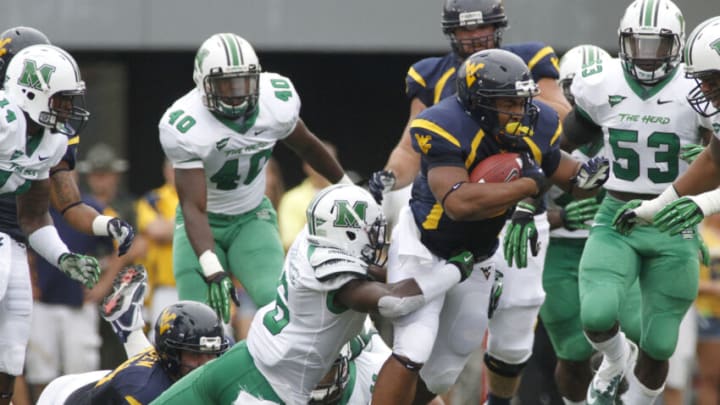College Football: These five U.S. states have the most FBS programs per capita
By John Scimeca

FBS programs by U.S. state population, per capita
5. Alabama
1.007 million people per FBS program
Alabama, Auburn, UAB, Troy, South Alabama
Interestingly enough, Alabama will shoot up to No. 2 on this list by next fall with the addition of Jacksonville State. Judging by the Gamecocks’ win at Florida State last season, we could all be in for a real treat when JSU joins the top ranks of college football next year as a member of Conference USA. The sixth FBS program will give Alabama a rate of 839,979 residents per FBS program, good for second-highest in these rankings.
The Yellowhammer state currently includes Auburn and Alabama of the SEC, South Alabama and Troy from the Sun Belt, and UAB, which is on the cusp of joining the Sun Belt from Conference USA. The state’s population is just a tad over five million people.
Auburn and Alabama are the cream of the crop in terms of prestigious college football programs. The Crimson Tide have four Heisman Trophy winners and claim 18 national titles, and may currently be the greatest dynasty that college football has ever seen under head coach Nick Saban.
Auburn is no slouch, either, claiming two national titles and 16 conference crowns while producing three Heisman Trophy winners. The two schools have met 86 times in the annual Iron Bowl, with Alabama owning a 48-37-1 edge against the Tigers.
The University of Alabama-Birmingham is a unique story in that the university actually ended the football program in 2014, only to quickly resuscitate it for the 2017 season.
UAB improved after coming to life, suddenly changing from a program that hadn’t recorded a winning season in a decade to a team that went 8-5 and a trip to the Bahamas Bowl in its first year back. The Blazers followed that up with an even better encore in 2018, finishing 11-3 and winning the Conference USA title.
UAB moved up through the NCAA’s lower divisions after its founding as a club football team several years prior, with the team first participating as a Division I-A squad in 1996.
Troy has fielded a team continuously since 1946, and the team was quite successful at the NAIA and Division-II levels with three national championships (most recently in 1987).
After a few years as a Division I-A independent, Troy joined the Sun Belt in 2004. The Trojans have since won six conference titles, including one during a three-year stretch from 2016 to 2018 in which the team went 31-8 overall under former boss Neal Brown (now the coach at West Virginia).
South Alabama is a program still in its infancy, having only begun playing games in 2009 and joining the FBS ranks as a Sun Belt member in 2012. The Jaguars, who play in Mobile, Ala. in the same new stadium that also hosts the annual Senior Bowl, have only made two bowl appearances in the school football program’s short history.